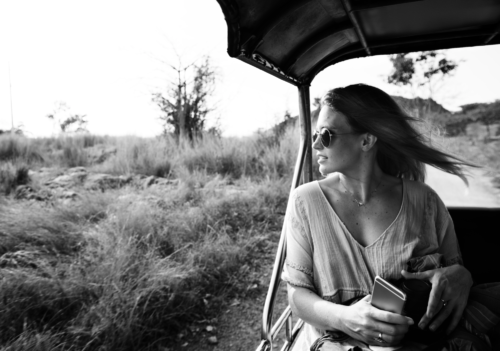Tips for planning an Ancestry Trip
“Vive ton grand-père”
This was how the café owner in Normandy, France ended the conversation after I recounted how my father and I were on an ancestry trip to trace my grandfather’s path through WWII and track down our ancestral roots in Germany.
 Grandpa jumped into Normandy during the WWII allied invasion as part of the 101st Airborne, then again into the Netherlands as part of Operation Market Garden. His unit also participated in the Battle of the Bulge (Bastogne, Belgium) and finally made their way into Germany. For his part in WWII (and Pearl Harbor), he was decorated with a silver star, two bronze stars and two purple hearts.
Grandpa jumped into Normandy during the WWII allied invasion as part of the 101st Airborne, then again into the Netherlands as part of Operation Market Garden. His unit also participated in the Battle of the Bulge (Bastogne, Belgium) and finally made their way into Germany. For his part in WWII (and Pearl Harbor), he was decorated with a silver star, two bronze stars and two purple hearts.
This was a once-in-a-lifetime trip for both my father and myself. Here’s some tips and starting points for how to plan and execute your own family research trip.
Have a Roadmap
 In 1995, Staff Sargent Lightcap returned to Europe for the 50th-anniversary reunion, which culminated in a ceremony at the Woods of Peace (Bois Jacques) outside of Bastogne where each surviving participant, including my grandfather, planted a tree. Grandpa took copious notes during the visit, detailing who he was with, place names, and the names of the monuments he visited. These notes, combined with a handful of WWII museums and some serious genealogy research, served as the framework/roadmap for the ten-day trip my father would take years later.
In 1995, Staff Sargent Lightcap returned to Europe for the 50th-anniversary reunion, which culminated in a ceremony at the Woods of Peace (Bois Jacques) outside of Bastogne where each surviving participant, including my grandfather, planted a tree. Grandpa took copious notes during the visit, detailing who he was with, place names, and the names of the monuments he visited. These notes, combined with a handful of WWII museums and some serious genealogy research, served as the framework/roadmap for the ten-day trip my father would take years later.
“You can only know where you’re going if you know where you’ve been.”
~James Burke
Traces of the Past
Most ancestry research starts out the same: Interviewing grandparents, aunts, and uncles; writing to distant cousins living on the other side of the country; sifting through old photo albums from the attic; and reading tattered diaries until perhaps you find yourself online translating a marriage certificate from the Old World.
 This usual starting point can be a lot of work that is as frustrating as it is exciting. Don’t worry if you don’t have a collective group of genealogy buffs coming together to create a comprehensive view of your family tree; you can still get a good idea of where you came from through other sources. One thing to note when searching is that your family name may have been altered when coming over to the States. Try phonetic variations and keep an eye out for documents with alternatives you may not have thought of. In our case, what is Lightcap was Leigep when Gottfryd Leigep arrived in Pennsylvania back in the early 1700s. You will also find that the farther you go back, the harder it is to find written documentation.
This usual starting point can be a lot of work that is as frustrating as it is exciting. Don’t worry if you don’t have a collective group of genealogy buffs coming together to create a comprehensive view of your family tree; you can still get a good idea of where you came from through other sources. One thing to note when searching is that your family name may have been altered when coming over to the States. Try phonetic variations and keep an eye out for documents with alternatives you may not have thought of. In our case, what is Lightcap was Leigep when Gottfryd Leigep arrived in Pennsylvania back in the early 1700s. You will also find that the farther you go back, the harder it is to find written documentation.
Where to Look
County Records
Documents recorded in the county can contain a plethora of information. Marriage, divorce, and birth certificates are a great way to go back in time; purchases, sales, and refinances of property can be great clues as to where and when your progenitors first put down stakes. Narrow down your search to the county your relatives lived in, and you can walk right in to do the research yourself. Some offices have records available online, saving you a cross-country trip. You can make copies for a fee and build your binder with certified information.
The name of these offices can vary state to state; look for the county clerk, county recorder of deeds, county assessor’s office, etc. An internet search or phone call can point you to the specific office you’re looking for.
National Archives:
National military, census, land, immigration, and naturalization records are all housed in the National Archives and are accessible both online and in-person. The site includes very detailed instructions for finding records.
Ancestry.com:
Harness the power of social collaboration; massive amounts of marriage licenses, public census information, draft records, photos, and more are all on the site. There is a fee to access the information, but it may be worth it since Ancestry digitized many of the records from the U.S. National Archive’s website to make them searchable online. I did the bulk of my trip search here.
23andme.com:
Growing up, my siblings and I believed that we had Native American roots. My sister and aunts all have dark complexions, dark hair, dark eyes, and I’m only a little jealous when I say they have great tans; meanwhile, my brother and I turn a lovely reddish hue in the summer months. I finally did a DNA test to discover our true roots.
The results? Zero hits in North America.
In fact, on my aunts’ (and father’s) side, we were almost exclusively mapped out to Europe, concentrated in Ireland. So how did we explain the dark hair and complexion? Black Irish. Mystery solved.
23andMe will map out your family origins for each side (maternal and paternal); it also has a social platform to connect people with similar geographical DNA profile origins. Compare family trees and further your search with others who came from the same regions.
“Who knows only his own generation remains always a child.” ~Cicero
Make It Interactive
You do not have to go it alone; social networks can often add stops along the way and create great memories.
- Contact local groups or clubs overseas that may be in connection with your ancestors. We reached out to a group of WWII supporters in Holland and Belgium who both gave us great info on local monuments and memorials.
- Facebook: Search for your last name and variants for connections overseas, say hi, and piece together more clues.
- Genealogy clubs/societies are a great way to get tips on hunting down your lineage. An internet search for these groups will typically find local support that can help your search. Meetup.com hosts many genealogical groups and most likely one in your city as well.
Book the Trip
At this point, your only issue should be choosing between the multiple sites and cities that house the secrets of your past. Make final plans to meet up with any contacts or relatives overseas, start booking flights, and finalize logistics!
Be Ready for All Outcomes
 Ideally, you will show up to bear hugs, warm drinks, and family get-togethers complete with photo albums and large charts mapping out your genealogy. For us, though, internet searches and Facebook queries revealed zero hits on our last name and any variants in the area around Hulshof, Germany, with only a handful of us outside of the U.S. Apparently, our ancestor did not put down roots nor leave much of a trace as he left Europe. What we found was a small working farm that celebrated a history dating back to 1284 and was host to just two families living and working the property. We saw no one; the whole event turned out to be a fifteen-minute pit stop to take pictures, make some conjectures, and savor the moment before heading back to Cologne for the night.
Ideally, you will show up to bear hugs, warm drinks, and family get-togethers complete with photo albums and large charts mapping out your genealogy. For us, though, internet searches and Facebook queries revealed zero hits on our last name and any variants in the area around Hulshof, Germany, with only a handful of us outside of the U.S. Apparently, our ancestor did not put down roots nor leave much of a trace as he left Europe. What we found was a small working farm that celebrated a history dating back to 1284 and was host to just two families living and working the property. We saw no one; the whole event turned out to be a fifteen-minute pit stop to take pictures, make some conjectures, and savor the moment before heading back to Cologne for the night.
Was all this effort still worth it? Absolutely. Planning this ancestry trip was more than a chance to connect with my past; it was a chance to connect with my father as we visited monuments and memorials, standing in the same places my grandfather had seventy years before. We also bonded over the little things that come with overseas travel: Spending twenty-three hours in a car, navigating the Paris metro, meeting people, and trying the local food.
Traveling, in general, is an experience. Traveling down the path of your ancestors is an intimate and bonding experience shared by you and your family. You’re not only creating memories for a lifetime, you’re uncovering memories from several lifetimes that lead up to yours.
 JC Lightcap is a travel safety consultant, author and serial traveler. He provides business travelers, study abroad students and families with the tools to focus on their travel goals, raise their awareness overseas and come home safely. JC has been quoted in the Washington Post, featured in the Liberty Project and is a member of the International Ecotourism Society. He currently lives with his well-traveled wife and two dogs in Denver, Colorado where he snowboards, camps and hikes 14ers.
JC Lightcap is a travel safety consultant, author and serial traveler. He provides business travelers, study abroad students and families with the tools to focus on their travel goals, raise their awareness overseas and come home safely. JC has been quoted in the Washington Post, featured in the Liberty Project and is a member of the International Ecotourism Society. He currently lives with his well-traveled wife and two dogs in Denver, Colorado where he snowboards, camps and hikes 14ers.











I love how you’ve rekindled those family ties overseas!
May 25, 2016It’s amazing how warm and willing to help people can be when you’re traveling, I wish more people realized this when they watched the news.
Feel free to email me directly and let me know how your planning is coming for that next trip to Ireland!
Great post. We’ve traveled with at least a peripheral goal of ancestry research several times. Most recently, we spent some time in Alsace, in the far east of France. I was able to make a huge amount of progress on one branch of my tree that I had been completely stuck on. We had some help from an Air BnB host, and spent a bunch of time in the archives of Colmar. It was a struggle with documents in both French and German, but a great experience.
Previously, we met relatives for the first time in Australia. They welcomed us with open arms into their home and their family. We have re-established contact and built new relationships that were on the verge of fading into history. Ireland is on my list next!
February 4, 2016